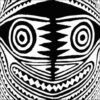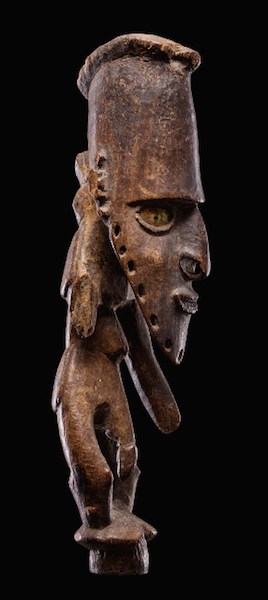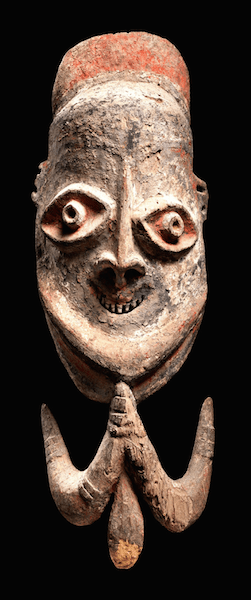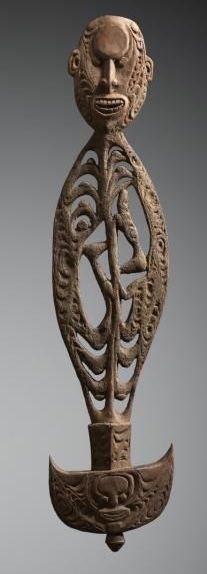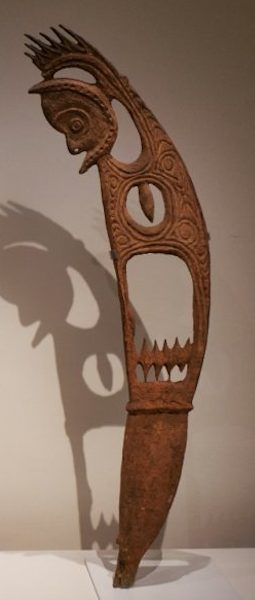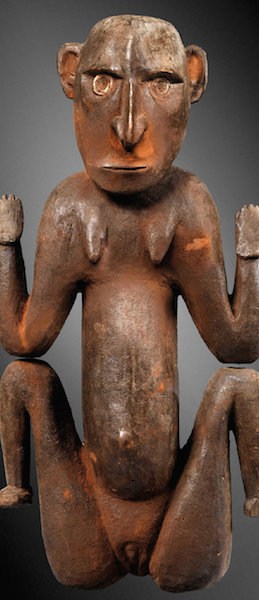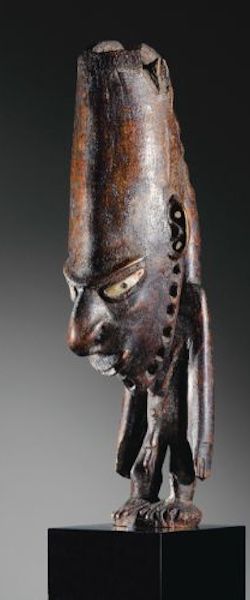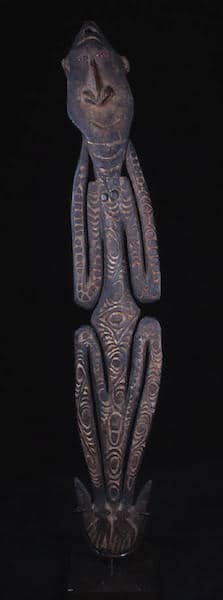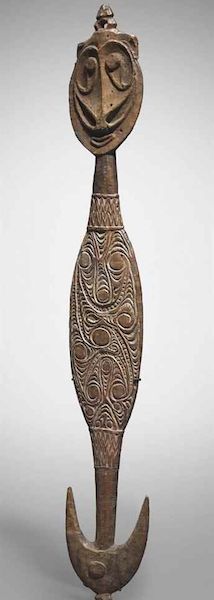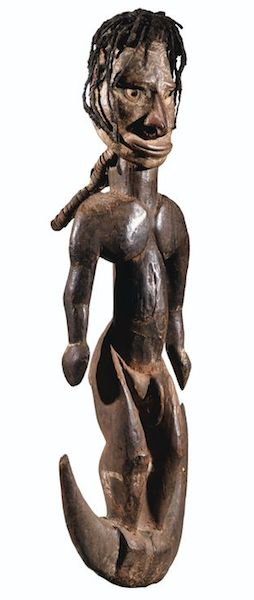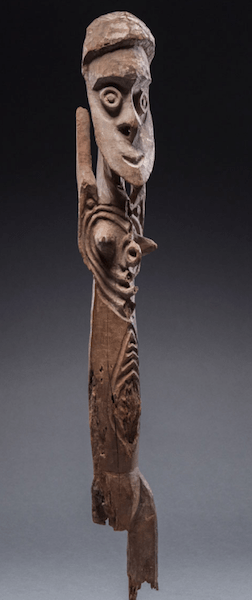Sepik Artifact
The most common carving brought back from Papua New Guinea would be a Sepik Artifact or Sepik Masks. Sepik artifact vary enormously in collectible value. A Sepik artefact made for sale to tourists has minimal value but one made for indigenous use is highly collectible and valuable.
The Sepik River has many different language groups and art styles. This article looks at the different styles of Sepik Artifact with images to help readers identify where a Sepik sculpture comes from.
I buy old indigenously used Sepik artifacts and if you want to sell a Sepik river artifact please feel free to contact me. If you have a Sepik River artifact and want to know what it is worth feel free to send me an image. I would love to see it.
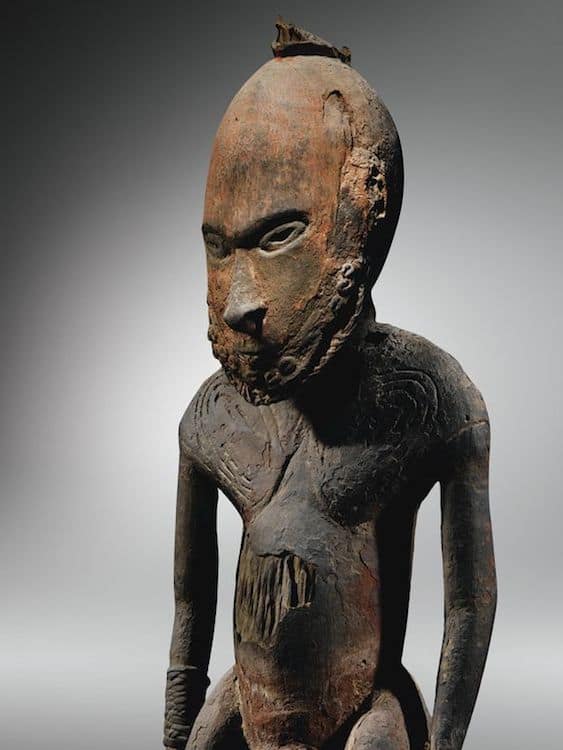
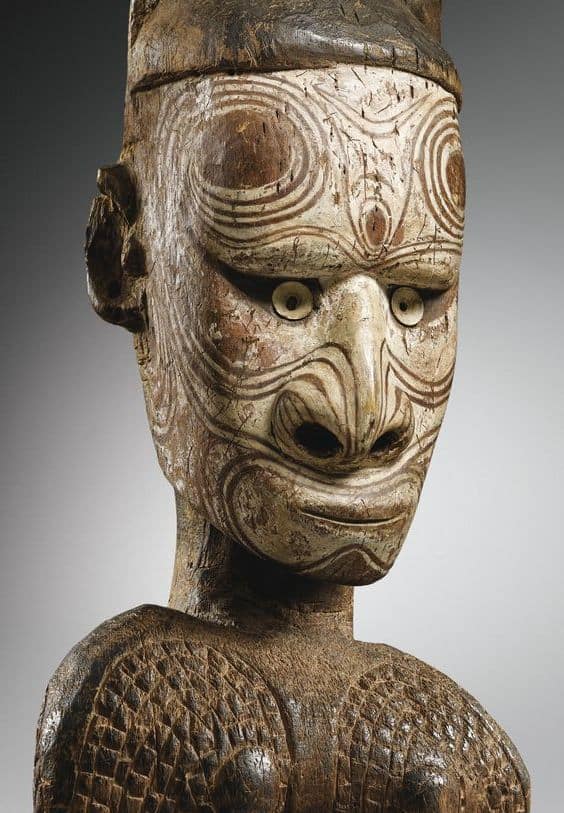
Sepik Artifact general
The village industry of making Sepik artifacts for sale to visitors started in the early 1960′s in the Middle Sepik. Early explorers and travelers bought Sepik artifacts as ethnographic collectibles. When villagers sold figures that they had created for worship they carved and empowered new artifacts. It didn’t take long before local Sepik carvers were manufacturing pieces specifically for sale.
Dealers in the 1960’s soon realized that new pieces were not wanted by collectors and museums. When they collected from villages they would request old black pieces. Sepik villagers soon realized old pieces sold better and started making old looking pieces. The art of the indigenously made “fake” was born.
It does not take much experience to tell an indigenously used piece of Sepik Art from a new for sale tourist carving. It takes years of experience, however, to tell a genuine old tribally used item from a good indigenously made fake. Today some Sepik carvers still specialize in making fakes that look old and indigenously used. Some of these carvers are so skilled that their art hangs on museum walls and in art galleries.
Sepik artifacts are amongst the most diverse group of artworks found anywhere in the world. This is because despite being a small area geographically the Sepik is culturally diverse.
To go into detail about each art style area of the Sepik would take a thick book. In fact, several good thick books about Sepik art are available including Kunst Von Sepik, Art of the sepik river and Myth and Magic. The following is an overview of sculpture examples from each area. It does not include other artifact types like Bowls, neck rests shields or masks. These all have articles dedicated to them seperately
Sepik Artifact by Area
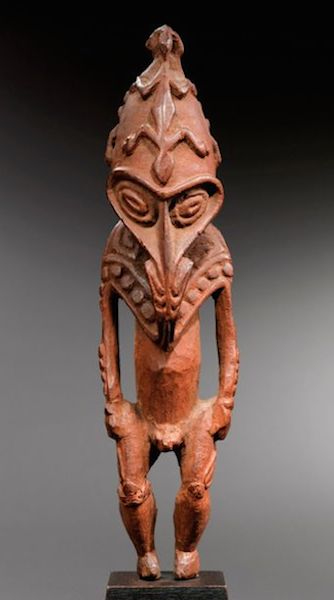
Lower Sepik Artifacts
Lower Sepik artifacts include figures from islands just offshore the Sepik Delta. These islands include the Schouten islands and Manum Island. The Sepik River delta and the Murik Lakes area is particularly well known for its powerful figures.
Older Sepik sculpture tends to have pierced nasal septums and pierced ears. The faces of the sculptures are the same as those on the masks as they represent the same ancestral deities. Figures from the Lower Ramu are also very similar because they have a very similar culture.
Lower Sepik sculpture should have near perfect symmetry and balance. Lower Sepik carvers valued visual precision. They aspired to be as skilled as a spider because of the meticulous complexity of spiders webs.
This area not only produced large almost life-sized figures but also produced smaller personal figures and charms.

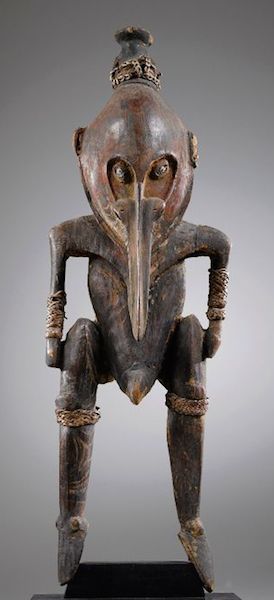
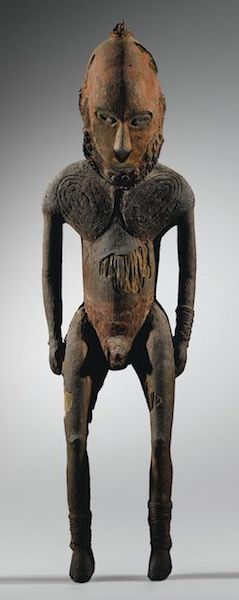
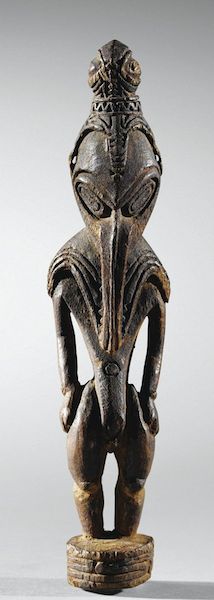
Yuat
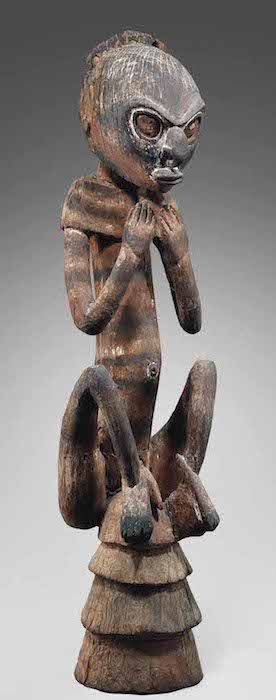
Sepik artifact from Yuat River
Yuat river is best known by collectors for their powerful sacred flute stopper Figures and Pole top figures. Yuat flute stopper figures often have an exaggerated forehead and pearl shell eyes. The chin and the top of the heads are often pierced for attachment of feathers or human hair. Pole top figures are extremely rare but are one of the most collectible pieces of New Guinea art.
The largest village on the Yuat River is Biwat. Often sculpture from this area are better known as Biwat figures. The Biwat also has a well-known shield with three faces and fantastic hair adornments.
Unlike other Sepik communities, there were no permanent ceremonial houses on the Yuat River. All ritual objects belonged to extended families or individuals and were in their owner’s homes
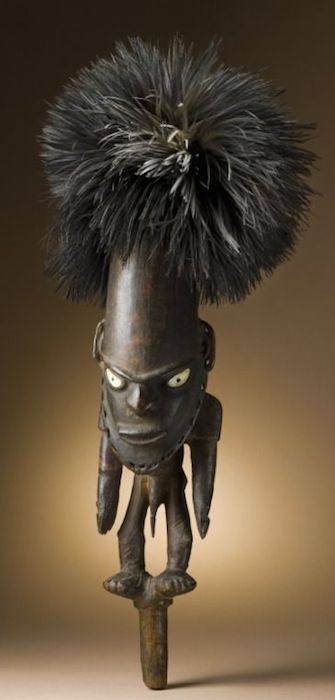
Abelam Figures
The Abelam live in the Prince Alexander Mountains north of the Sepik River. They practice a complex 8 stage initiation cycle. In the final initiation rites, the initiate finally gets to see brilliantly painted figures.
Abelam artifacts all have a similar looking face. Old examples have a pierced nasal septum.
Abelam artifacts s are common but great old examples are not. Figures often incorporate hornbill and cockatoo heads. The Abelam are also well known for their ceremonial house decorations like lintels.

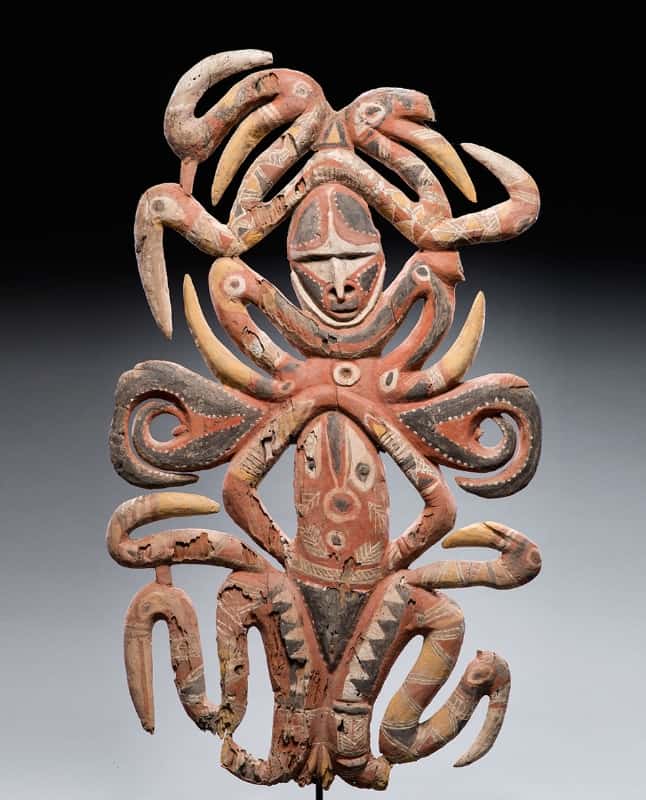
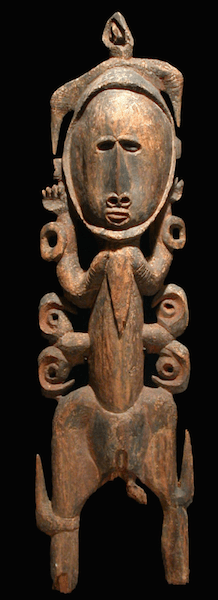



Iatmul Middle Sepik artifact

Iatmul Sepik artifacts
Artifacts from the Iatmul are perhaps the most recognizable of all the arts of the Sepik River. Sculptures are typically elaborately carved sculptures. The sculptures have painted flowing curvilinear designs.
The Iatmul people are a large community with many of their villages situated on the banks of the Sepik River. Each village has one or more impressive ceremonial houses. Figures and ritual objects essential to the well being of the community were in these houses.


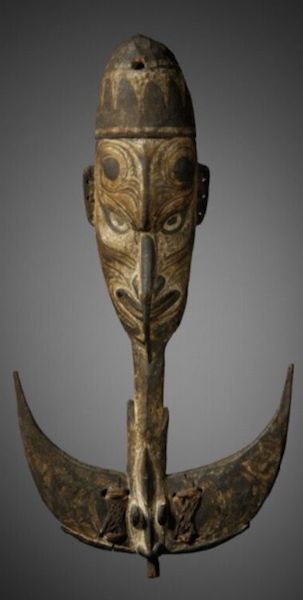
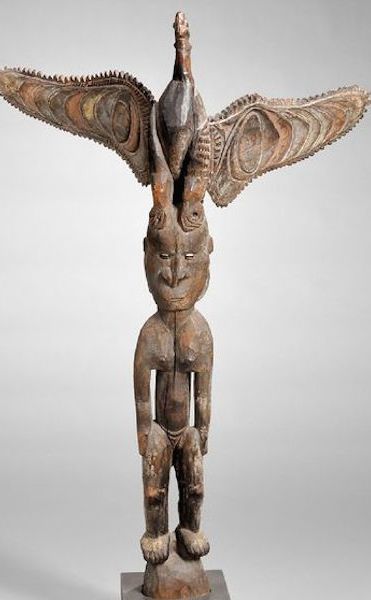
Traditionally, the Iatmul were the dominant culture of the Sepik River. They had a reputation as highly skilled headhunting raiders. Early collectors often used Iatmul guides and based themselves in Iatmul villages.
A lot of traditional tribal art was from this area and heavily collected in the early 1960′s. It became an early manufacturing centre for early tourist art. It is still the most prolific art producing area in Papua New Guinea today. Small ships full of tourists buy thousands of Sepik carvings from here every year.
Sawos sculpture
Sawos sculpture are very similar to Iatmul figures. The Sawos have a close relationship with the Iatmul and share many cultural aspects. The Sawos Live just north of the Iatmul in the grasslands away from the Sepik’s floodplain.
Unique to the Sawos are Malu Plaques. These figures are flat with raised noses and intricately carved. They are amongst the most skillfully carved examples of primitive art.
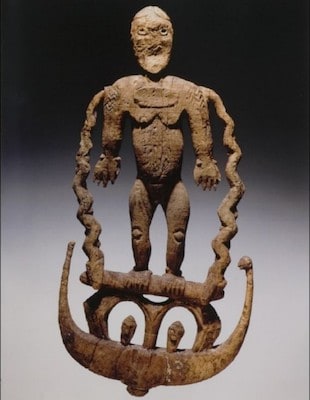
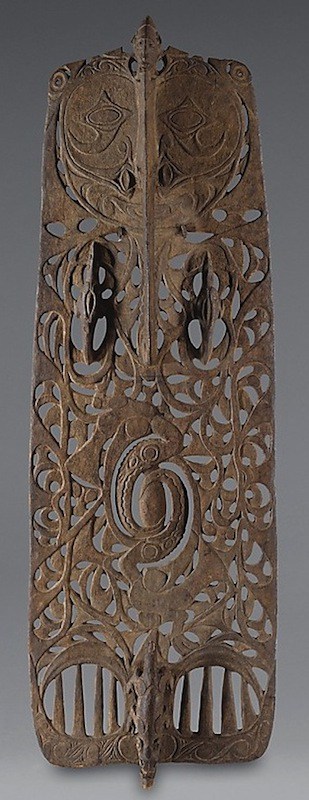


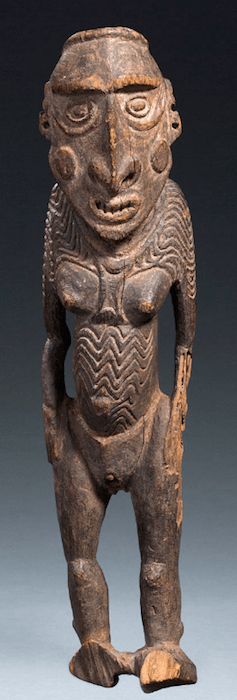

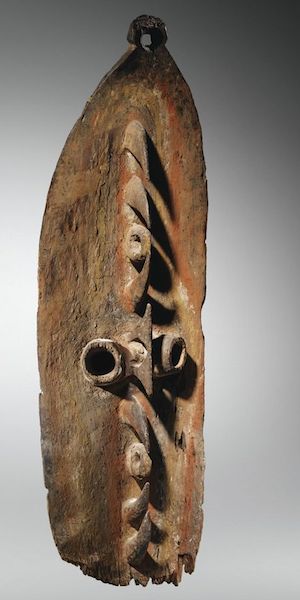
Hunstein Mountains Artifacts
The Hunstein mountains are the home of the Bahinemo people. The Bahinemo produce some of the most fascinating sculptures anywhere on earth called Garra.
Male Dancers carry Garra in their hands during initiation ceremonies and they come in two types. The first is opposing hooks on a long thin curved backbone. The second is broader in the back and often has a stylized face in the center. This second type is often classified as a mask although it is never worn.
Old Hunstein Artifacts are rare and very collectible. Most of the examples that come onto the market are late 1960’s made for sale examples.
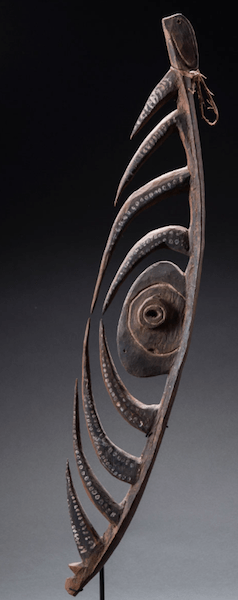

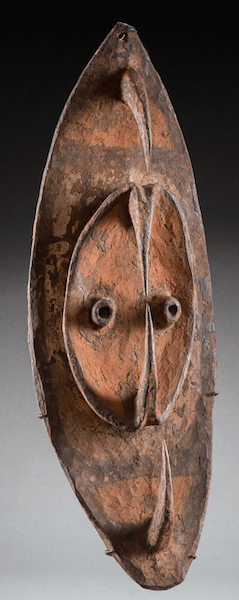



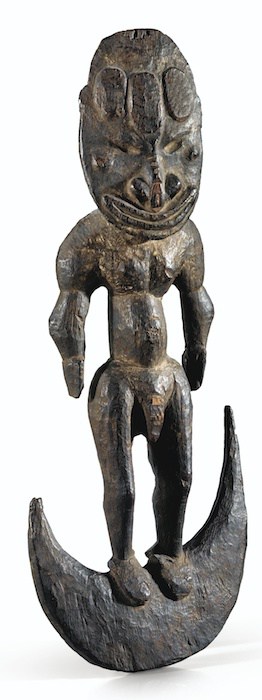
Chambri Lakes
Chambri lakes are in the southern side of the middle Sepik. Artistically it is better known for its clay pots but did produce great sculpture.
The sculpture is similar to the Iatmul and most figures from this area have pre 1960’s collection dates.
Chambri Lakes sculpture is rare.
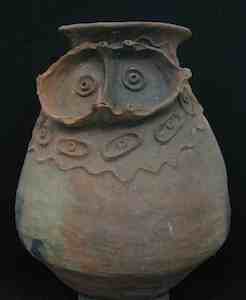
Yiman Sepik Artifact


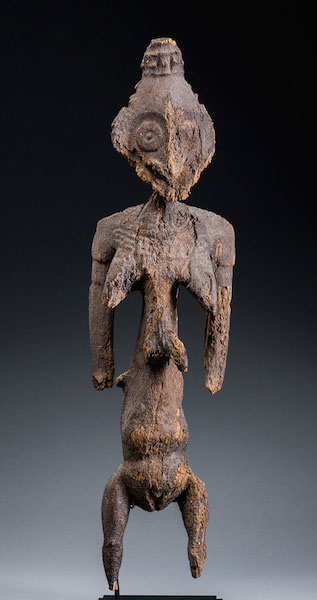
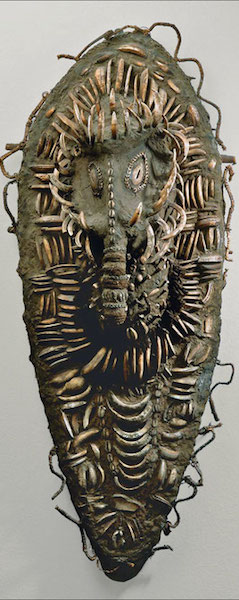
Porapora and Keram River
Korewari / Korowori Artifacts

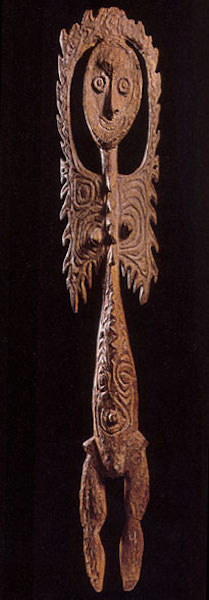
Korewari artifacts are some of the oldest figures in Papua New Guinea. Abandoned in caves for hundreds of years they have a dry eroded patina.





Washkuk Sepik Artefacts
Washkuk figures are associated with Yam ceremonies. These Ceremonies are held to ensure a successful yam harvest. The three main consecutive ceremonies are Yena-ma Minja-ma and Nogwi. Each ceremony has an associated figure.
Washkuk sculptures are quite common but good early examples are not. Washkuk sculptures are sometimes referred to as Kwoma sculptures.
Yena Figures are for the first ceremony yena-ma. Yena figures are a stylized human head on a long spike.
They represent the human soul.
Old examples often have downward facing spikes on the back of the head.
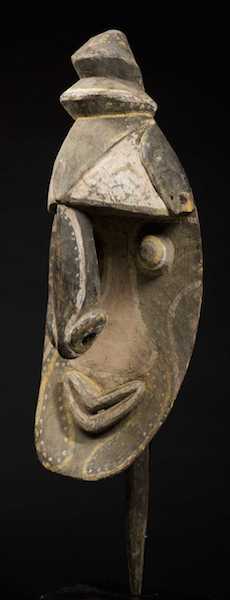
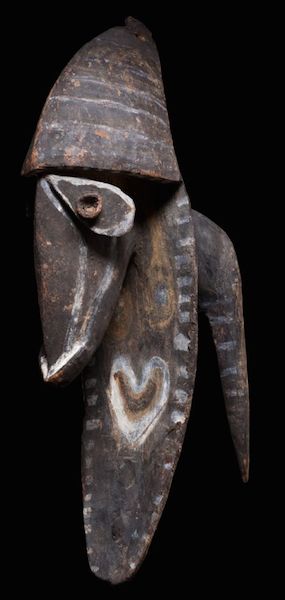
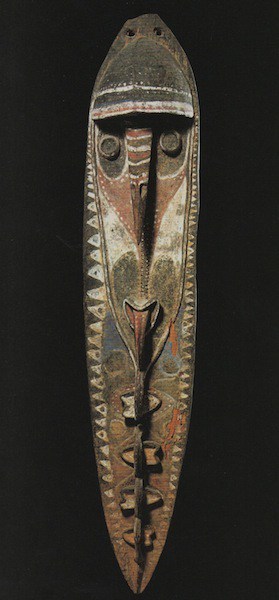
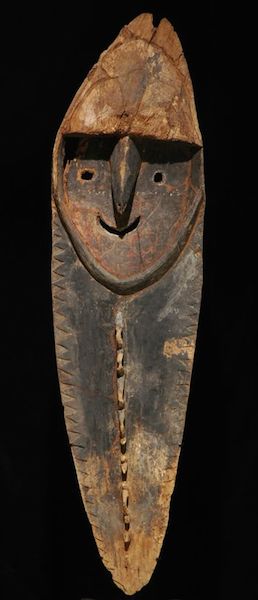
Minja figures are used at the second ceremony and are carved to look like a water spirit associated with fertility.
Great old examples have the protruding tongue that then ripples down the chin
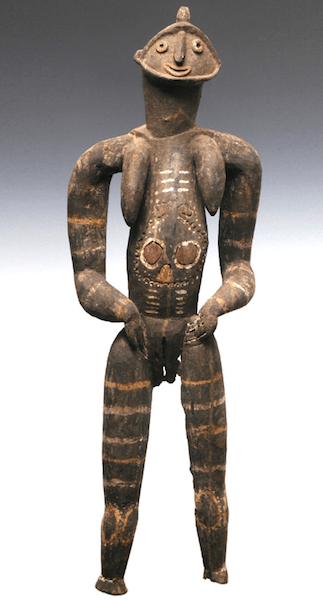
Nogwe Figures are for the final and most important ceremony. Usually, two female Nogwe figures are placed on the top of a large pile of yams in the men’s house.
The ceremony can only be attended by the bravest warriors and most fertile men.
The best old examples tend to be more fluid.

Boiken Sepik Artifacts




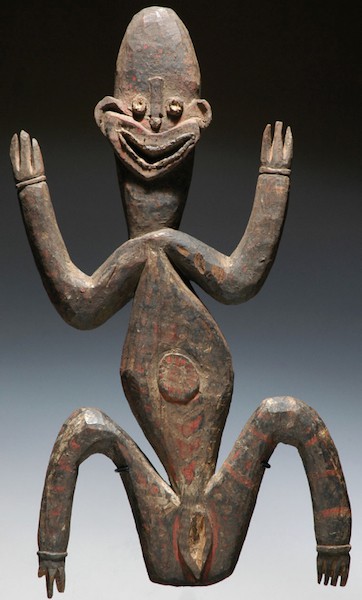
Torracelli Mountains Artifacts
The Torracelli mountains are south of Aitape and produce flat figures often in a squatting position.
These sculptures are similar to those of the Boiken Yangaro but tend to be wider.
Torrecelli mountain sculptures are sometimes called Arapesh figures.
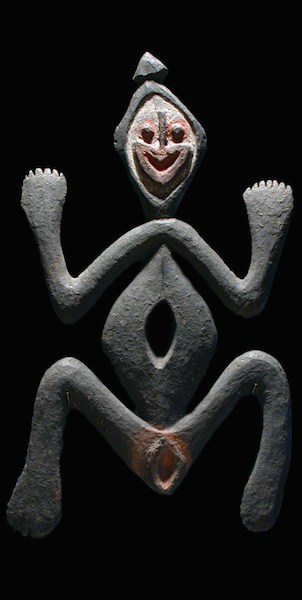
Sepik Artifacts
This is just some examples, so I hope you can appreciate the vast variety of Sepik Artefacts. The Sepik is probably the most prolific figure-producing region in the World. As Primitive Art, they are extremely expressive and come in a vast variety of sizes forms and functions. It is a great pity that the majority of people who visit the Sepik River today only get to see the modern tribal art produced for sale to tourists. They often miss the fantastic variety of other figures this diverse region has to offer.
If you enjoyed this article you may also enjoy my article on New Guinea sculpture and Aboriginal sculpture.
All images in this article are for educational purposes only.
This site may contain copyrighted material the use of which was not specified by the copyright owner.
